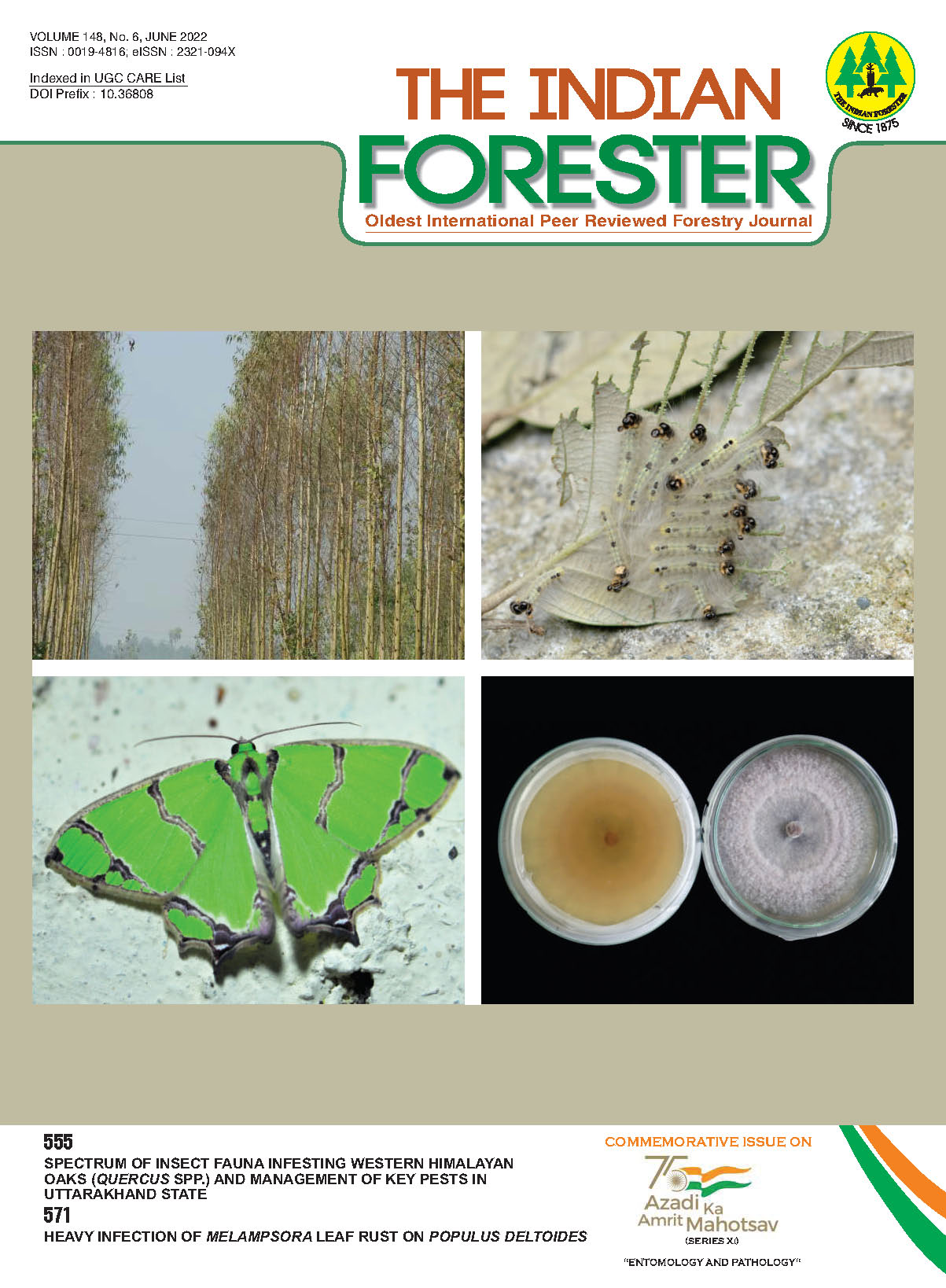First Report of Erysiphe sp. (Pseudoidium sp.) Causing Powdery Mildew on Ipomoea quamoclit L. from India
DOI:
https://doi.org/10.36808/if/2022/v148i6/157425Abstract
No Abstract.References
Bhagat R.B., Shimpale V.B. and Deshmukh R.B. (2008) “Flora of Baramatiâ€, Vedams Books International, New Delhi.
Braun U. and Cook R.A. (2012). Taxonomic Manual of the Erysiphales (Powdery Mildews). Fungal Biodiversity Centre (CBS Biodiversity Series No. 11), Utrecht.
Hosagoudar V.B. and Agarwal D. (2009). Powdery Mildews of India Check List. Associated Publishing Company, New Delhi.
Jamaluddin, Goswami M.G. and Ojha B. (2004). Fungi of India (1989–2001). Scientific Publishers, Jodhapur, India.
Paul Y.S. and Thakur V.K. (2006). Indian Erysiphaceae. Scientific Publishers, Jodhpur.
Rehman K.U., Hamayun M., Ahmad G., Khan W. S., Muhammad S., Gul R. and Yaseen T. (2020). Antibacterial and antifungal prospective of cypress vine (Ipomoea quamoclit Linn). Pure and Applied Biology, 9(1) : 464-470.
Singh N.P., Lakshminarasimhan P., Karthikeyan S. and Prasanna P.V. (2001). “Flora of Maharashra Stateâ€, Botanical Survey of India, Calcutta.
Sultana R. and Mahbubur R. AHM (2016). Convolvulaceae: A taxonomically and medicinally important morning glory family. International Journal of Botany Studies, 1(3) : 47-52.
Downloads
Downloads
Published
How to Cite
Issue
Section
License
Unless otherwise stated, copyright or similar rights in all materials presented on the site, including graphical images, are owned by Indian Forester.





